To understand the procedure, let us have a look at the manufacturing procedure of different types of origami papers, their types and a gist of their quality as well as popularity.
So how is Origami paper made? The process of making Origami paper is simple. It involves cutting the tree according to the type of paper to be made, cleaning of the bark, scraping of the bark, beating the scrapped material to pulp, boiling the material and laying it out on a surface to dry.
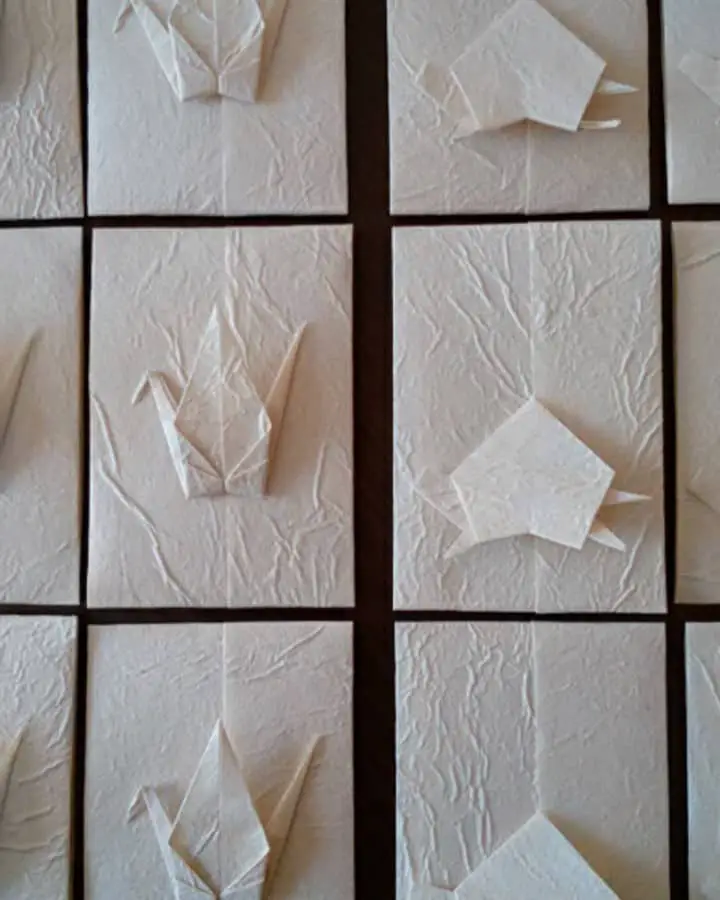

Manufacturing Traditional Japanese Origami Paper
Every paper has the same manufacturing process, but different trees are used in different kinds of papers. To understand the procedure, let us have a look at the manufacturing procedure of Washi paper.
Washi is a traditional Japanese paper that’s made using long plant fibers.
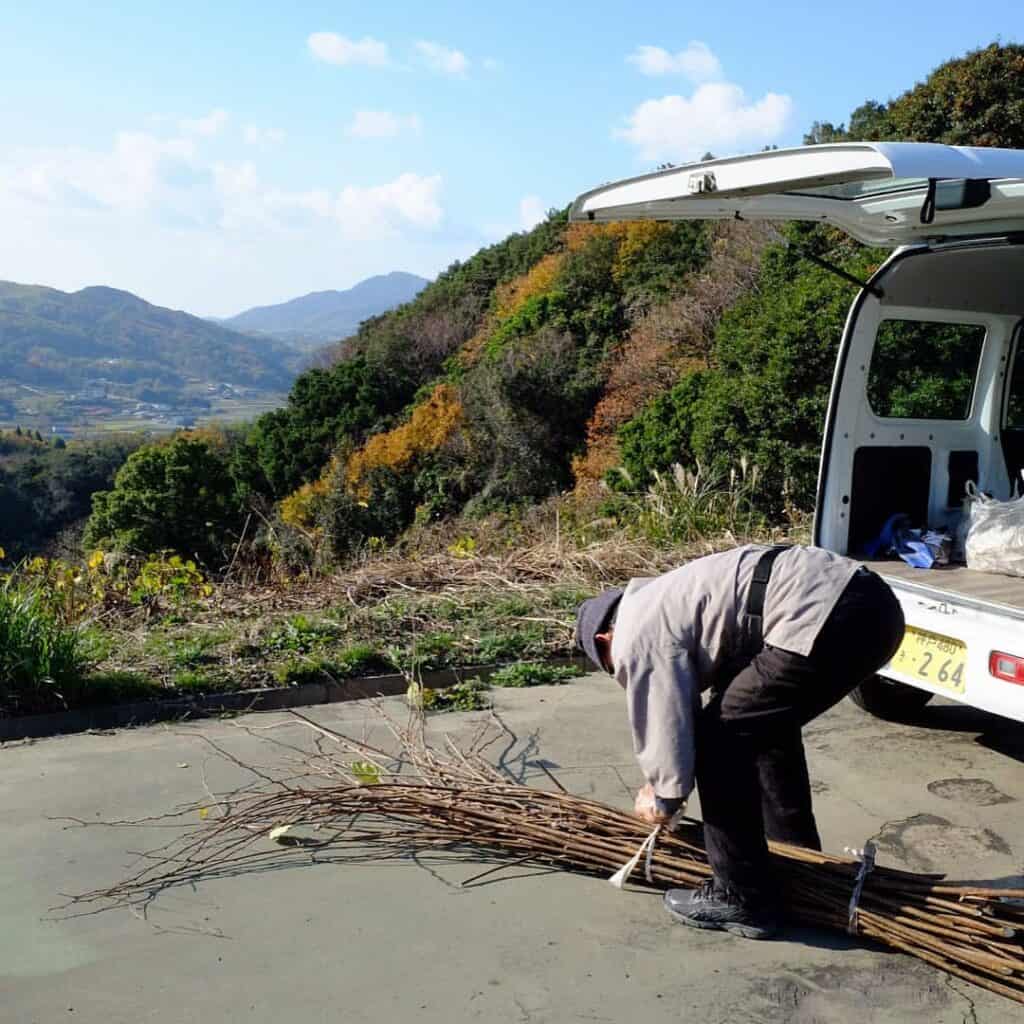
- Freshly cut kozo bark tree is stacked outside the workshop before being used for the process.
- Kozo tree bark is washed and imperfections removed as it nears the stage of becoming paper during the paper-making process.
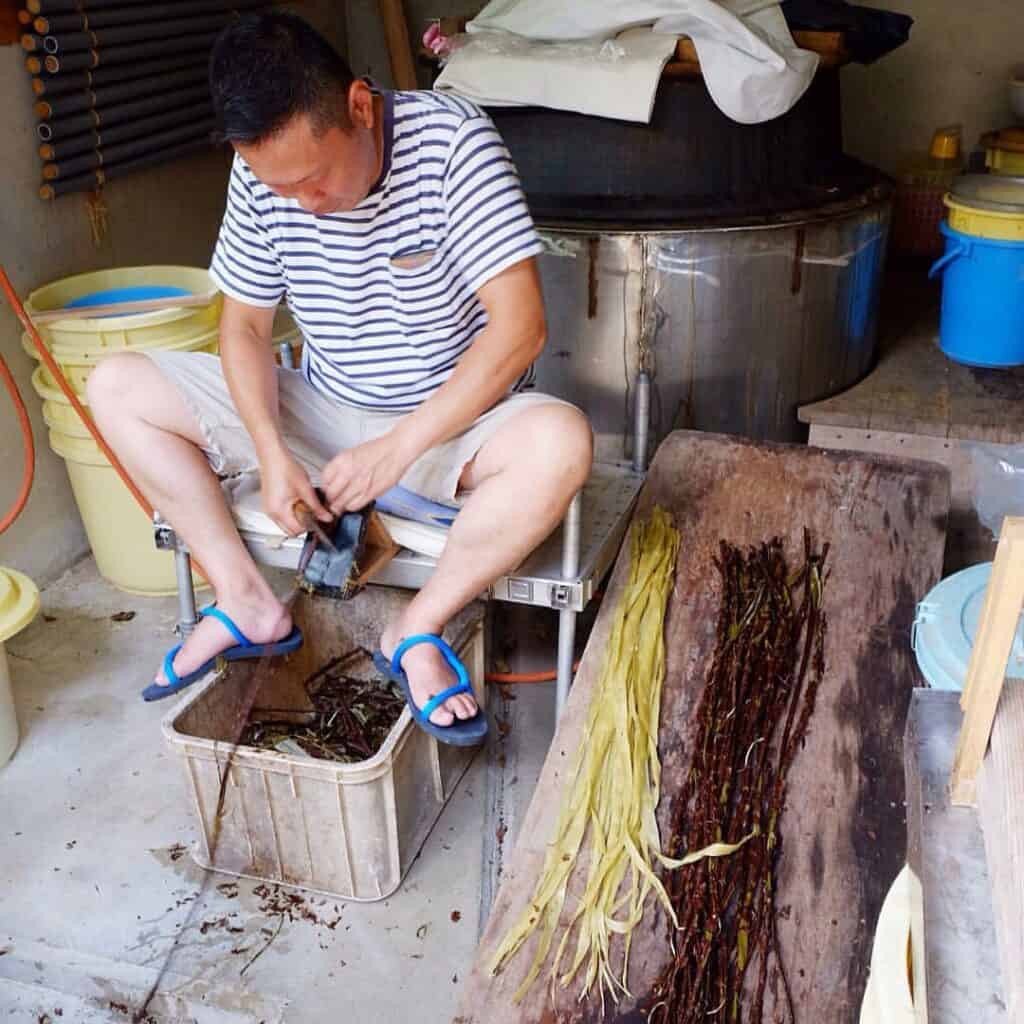
- Kozo bark tree is scrapped during the ‘washi’ paper-making process at Uchimura Kobo.
For centuries, colorful designs applied by woodblock have been made for decorative use. Washi is traditionally used in screens, lamps and blinds taking advantage of its translucency. - Pounding of kozo bark tree, beating it to pulp during the ‘washi’ paper making.
- The second last step is to boil it.
- After boiling, it is laid out and imperfections removed as it nears the stage of becoming paper.
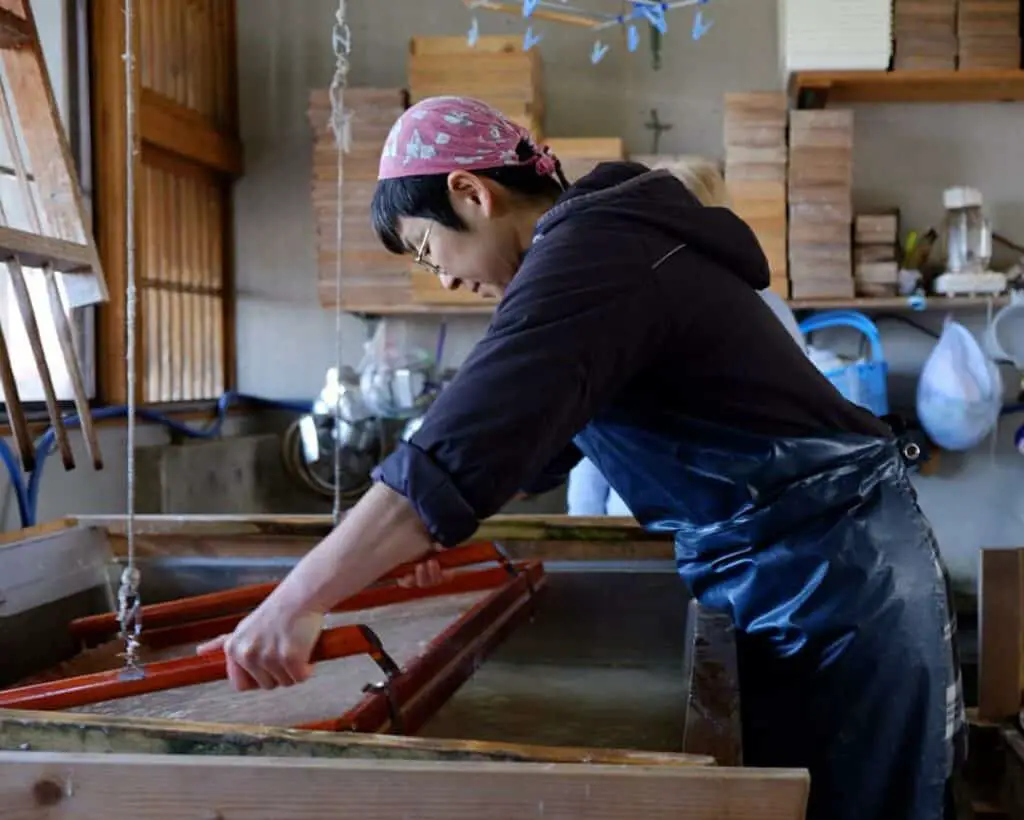
- At last we have the final product, finished paper is displayed at Uchimura Kobo, one of the Hosokawa-shi paper making workshops. Flower petals, ash from different kinds of wood, and different types of grasses are added to the basic pulp to create different colors and textures.
High quality locations in Japan use non-toxic long-lasting inks that fill into the cracks in the fibers of the paper to create a very smooth folding surface. This process also means that when you fold the paper, the ink has penetrated to ensure the white doesn’t show or crack through when creasing the paper. This is far superior to the cheaper process (most commonly done in Chinese papers to save on ink costs) of dying the fibers of the paper first to make colored paper.
The thickness of your origami paper is crucial to determining the types of models that you can fold, but there are trade-offs. Super thin paper can be folded into many layers without being bulky but is often fragile and can break if folded in the same place repeatedly. On the other side of the spectrum, super thick paper will be very hard to crease multiple times but will be very strong.
Origami paper is used to fold origami, the art of paper folding. The only real requirement of the folding medium is that the paper must be able to hold a crease but should ideally also be thinner than regular paper for convenience when multiple folds over the same small paper area are required.
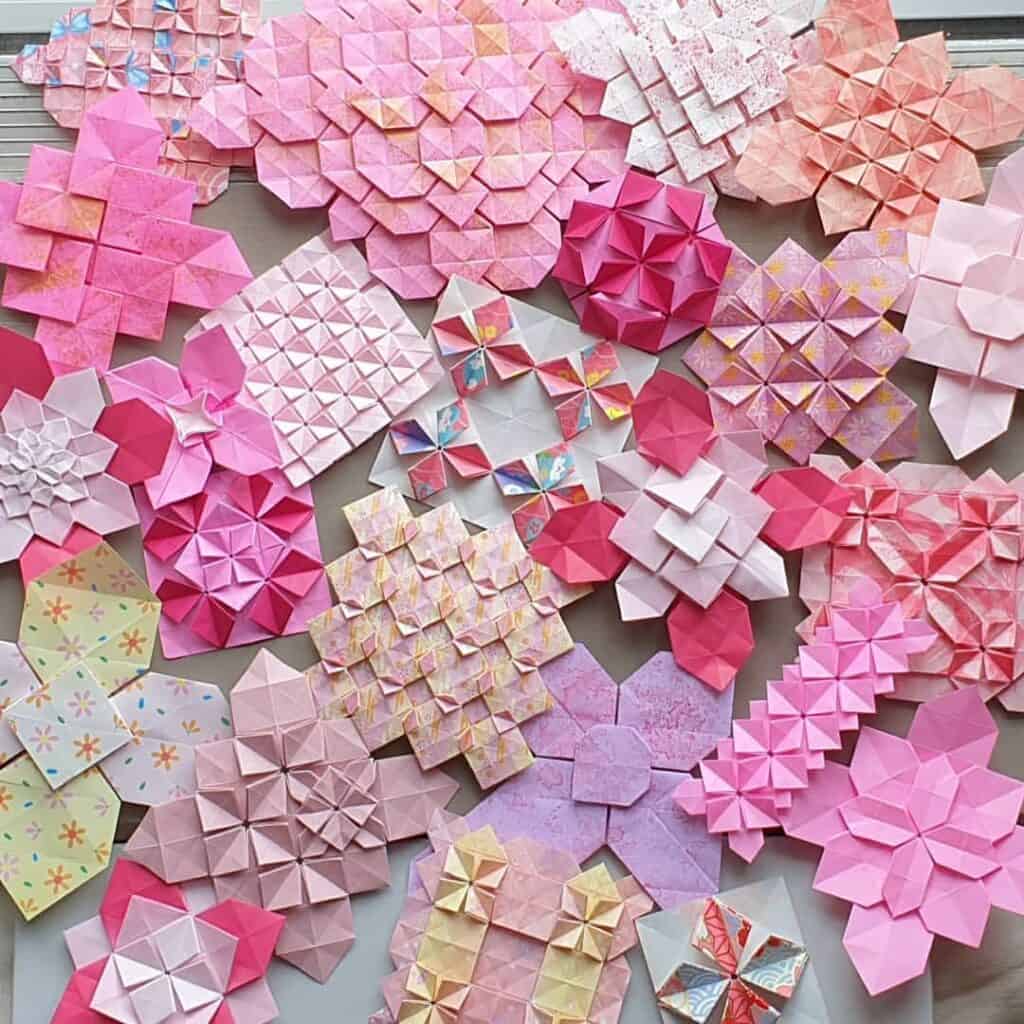
The printing process in origami paper is critical as the paper should be such that it can be folded and resists cracking. For example, think about the advantages and drawbacks of trying to fold a model with these types of paper:
- Facial tissue
- Copy paper
- A cardboard box
Obviously, none of these paper are ideal for folding origami. On one hand, the facial tissue would be thin enough for lots of layers but isn’t strong enough to withstand a lot of folding and on the other hand, the cardboard box would be very strong, but too thick to fold very much at all. Paper made for origami tries to combine these two aspects by being both thin AND strong, but each type of origami paper is better or worse suited to different models. In fact, paper thickness is so critical to origami, often the paper you choose determines the types of models that you can make.
Types of Origami Paper
There are in total 5 types of origami papers. We have discussed the general procedure of one of them, lets look at the most famous and authentic origami paper.
Kami
The best paper for origami is called “Kami” (the Japanese word for origami paper), the standard origami paper. Kami comes from Japan in factories that have been around for generations and have staff that have toned their skills over many years.
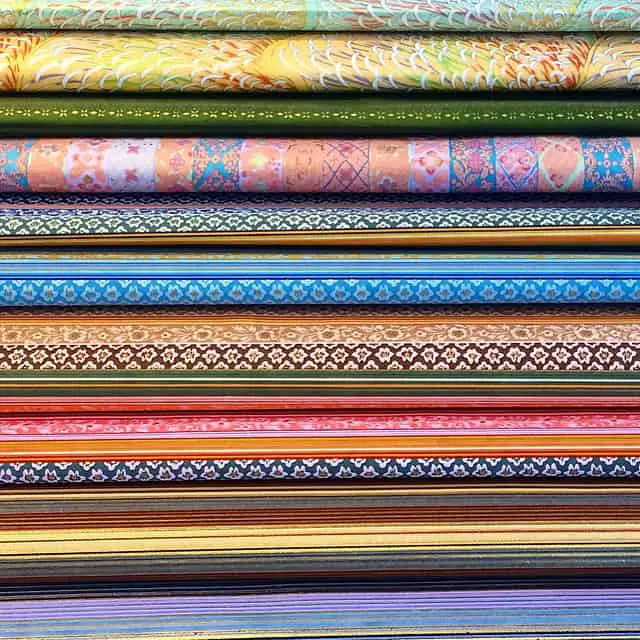
- They start with white base paper and ink or stamp various colors and designs onto it depending on the type of origami paper being created.
- It is made on a continuous belt moving through a paper pulp slurry, and the motion of the belt tends to align the paper fibers along a given direction. You can easily see the effect of this alignment by trying to tear a sheet of newspaper; it will tear much more cleanly in one direction (with the grain) than the other (across the grain).
- Paper absorbs moisture from the air, and a change in humidity will cause a slight change in the size of the paper. But because of the grain, machine-made papers swell more in one direction than the other. That means that even if the paper was square when it left the factory, it might not be square when you open the package if the humidity is different where you live.
So one of the features of the Standard origami paper is that it has color on one side and the other side is white. Uncolored standard paper (or a pure white sheet) is .066 millimeters, paper dyed on one side (like every sheet other than white) is .071 millimeters thick. It was actually developed in the early 20th century for use in schools, using inexpensive, western-style machine-made paper. It was colored on one side, because that’s cheaper. The paper is not archival, and the dyes are unstable, so it degrades over a period of years. And while it is fairly thin (thus using less material, making it cheaper per sheet) and it is not very strong.
The following papers are cheaper and have completely different texture. They can still be used to produce different origami art depending upon the complexity. Complexity refers to the fact that in cases where several folds are required on one part of the paper, the thickness should be as less as possible to let it happen.
Tant
If you wish to display your origami work to others, we recommend using Tant paper. This paper has a beautiful patterned texture and a nice sheen on the surface. Tant has a thickness of .118 millimeters per sheet, so it is thicker than all standard sheets. The meaning of the term Tant is “a lot,” which means an abundance of color.
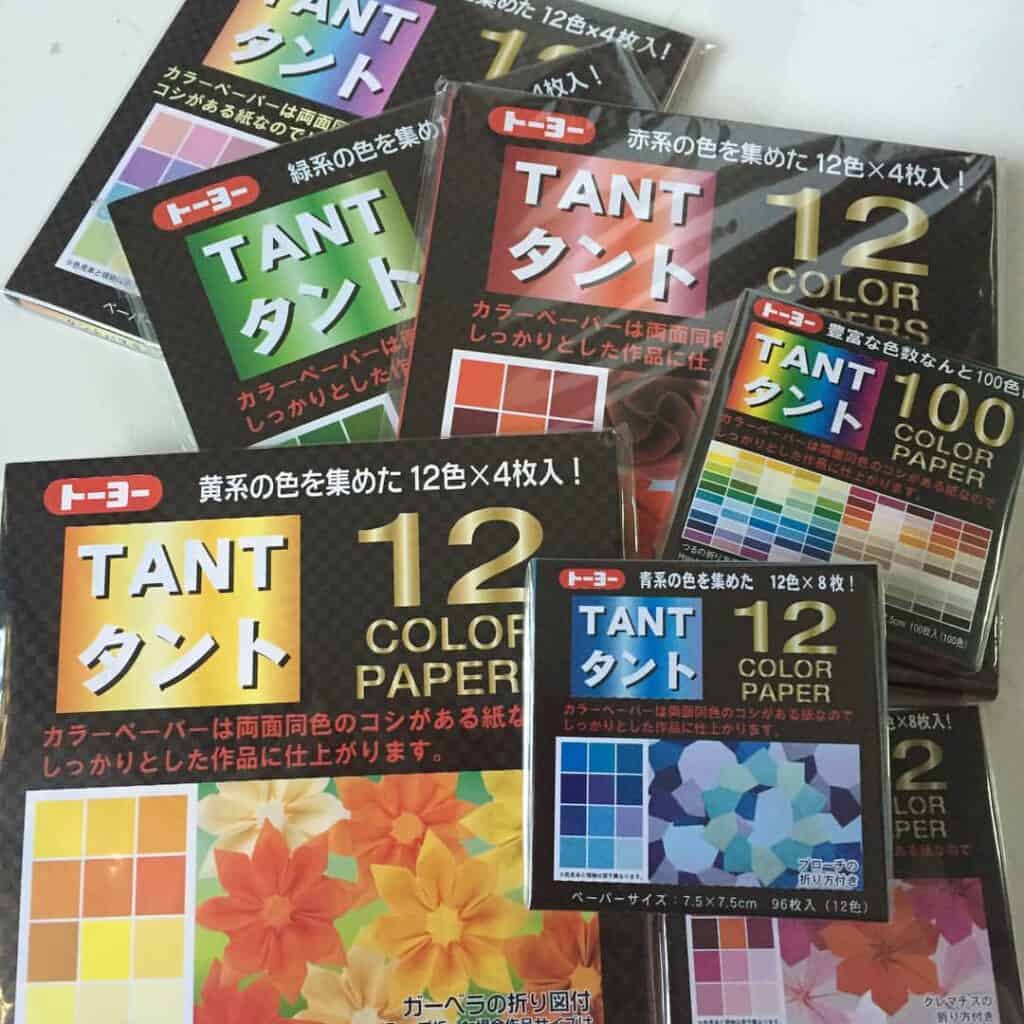
Tant paper has become famous in the Japanese origami world because it is a dyed fiber paper that does not break even after repeated creases and can keep beautiful surface texture. It is made by Hokuetsu Paper Mill Company and is only made in Japan. The pulp is either imported to Japan from the USA and Canada or made in Japan from Australian Eucalyptus Wood. It is then dyed and shipped to Toyo Co. to be cut, packed and sold.
The paper is not acid-free! Good for almost every kind of folding, it is light weight with relatively high tensile strength, an amazing color palette, a large variety of sizes, and more. This is an origami paper made for origamists. It even comes with diagrams for a variety of models.
( Tant paper is the most used paper among origami folders, after standard.)
Duo Color Standard Paper
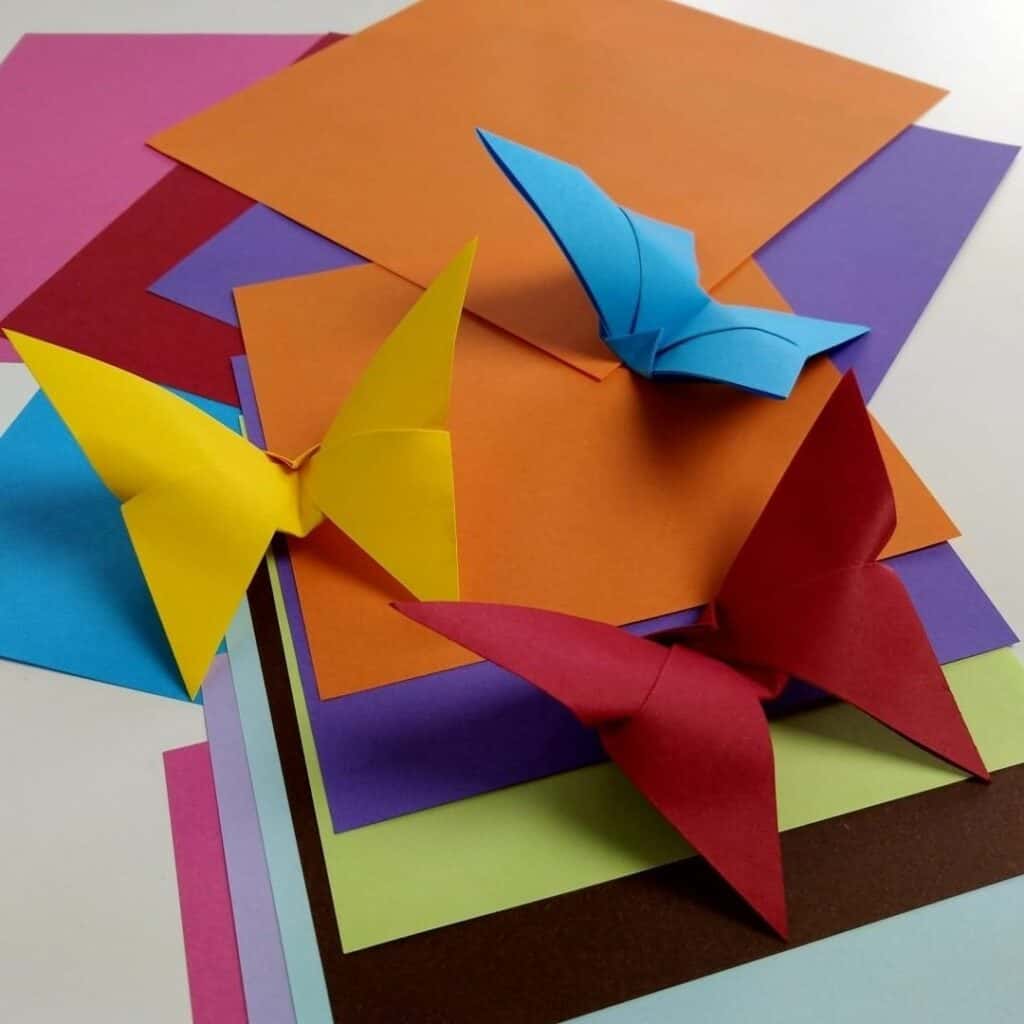
Duo Color paper is another kind of standard paper, but has both sides dyed with ink. When this is done properly, this requires a second inking process, but in cheaper versions of duo paper (particularly in China) the fibers themselves are dyed to save ink and money. It can be different colors on each side of the sheet, or it can also be the same color on both sides. This paper is more expensive than single color standard because of the second ink run, but less expensive than Tant. Duo is also only available in complimentary color combinations as well as the same color on both sides. Because of the extra layer of ink it is the thickest of the standard sheets measuring .076 millimeters per sheet.
Tissue Foil
This paper has a color tissue paper to one or both sides of a sheet of aluminum foil sheet. Tissue foil is one of the easiest papers to use for origami, because it is a combination of foil and tissue paper. The foil makes it strong and stiff while the tissue makes it more flexible and can provide a wide variety of colors or patterns. In the past the only way to get this paper was to make it yourself, which can be costly and time consuming.